
The weather pattern has been more active thanks to El Nino across most of South America, but the heavy rain in southern Brazil has led to flooding concerns as spring planting begins.

The weather pattern has been more active thanks to El Nino across most of South America, but the heavy rain in southern Brazil has led to flooding concerns as spring planting begins.
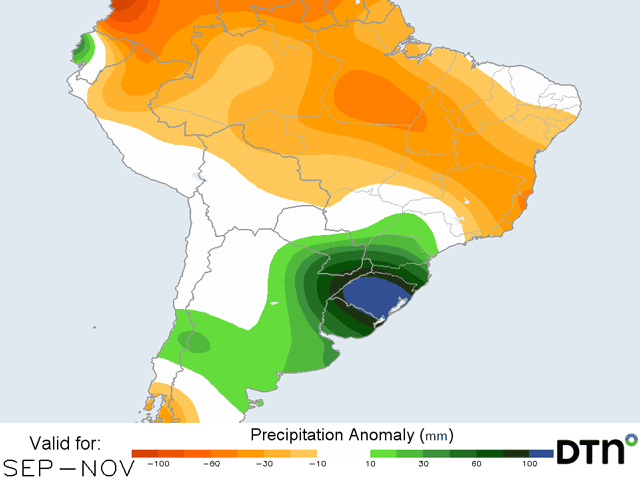
With the turn to September, the spring planting season is in sight for South America. El Nino will be the biggest influence on the weather pattern for the next several months, and producers down there are likely to be happy about it.
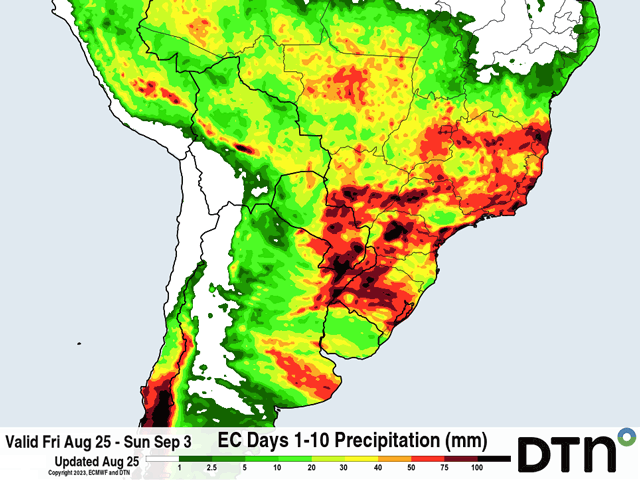
A front moving into central Brazil will stall. Model forecasts vary, but suggest a high probability of early rainfall well ahead of the primary wet season.

The safrinha (second-crop) corn harvest in Brazil is in full swing for some states while others still lag behind. This week's forecast shows a much different temperature trend from last week in southern Brazil; however, additional rain chances remain in the forecast through...
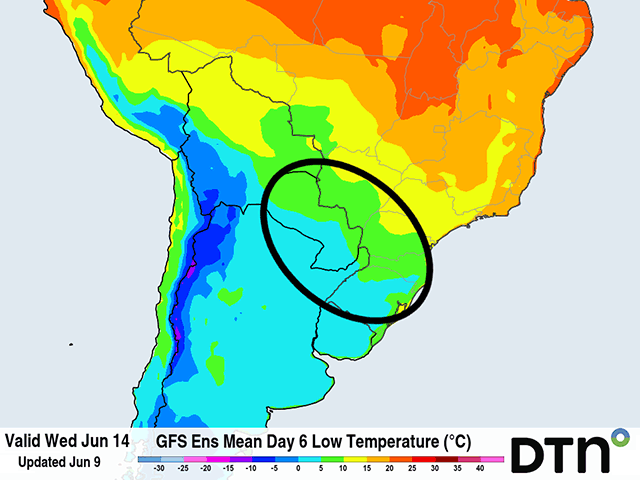
Late-planted safrinha corn in south-central Brazil is still in the pollination and fill stages of growth, which make it vulnerable to frost damage, and significantly in some areas. A cold front that moves into the country this weekend will bring some very cold weather with it, which...
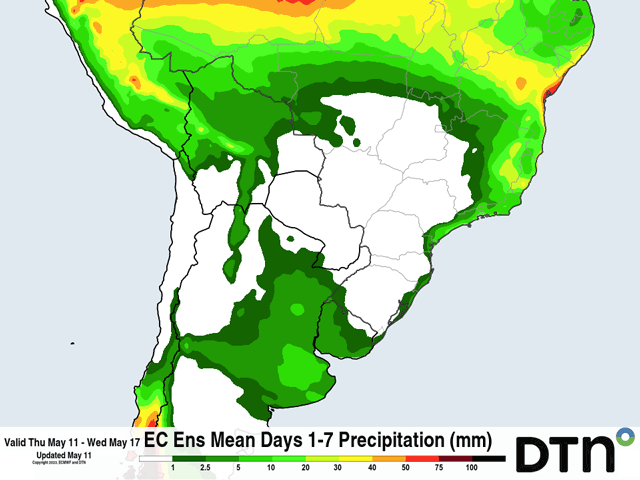
The wet season is officially over and safrinha corn in central Brazil is facing dryness for the next week and likely beyond. However, this is typical for this time of year.

Mato Grosso, Brazil, Gov. Mauro Mendes Ferreira spoke Monday at the Water for Food conference in Lincoln hosted by the University of Nebraska. Officials in Nebraska had hosted Mendes and other Brazilian officials last year to begin opening a dialogue on irrigation development in...

Wheat growing areas in South America are beginning to plant their 2023 crop, but are doing so in poor soil moisture across much of the region. Additional rain is needed and building El Nino conditions may supply some better rain chances in the second half of May.

Though there were fears about a shortened wet season in Brazil due to the waning influence of La Nina and delayed plantings, the region escaped with overall good rainfall. Next up will be a watch on temperatures and potential for frost.
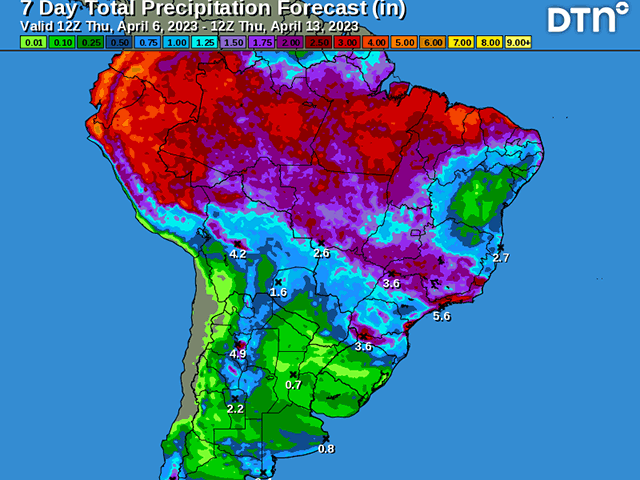
After two weeks of isolated rain in central Brazil, a system moving through the country is bringing some briefly beneficial rain before going isolated again next week. The country will rely on weather systems for its rain for the next several weeks.

After some delayed planting for safrinha corn, Mother Nature is not helping out by reducing rains across central Brazil going into and through April.
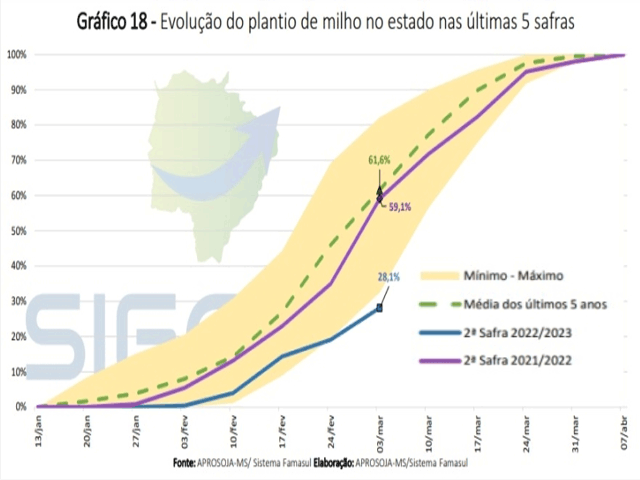
With Argentina's crop production almost set, the focus in South America is for Brazil's safrinha corn crop, which may go through some significant challenges this season.
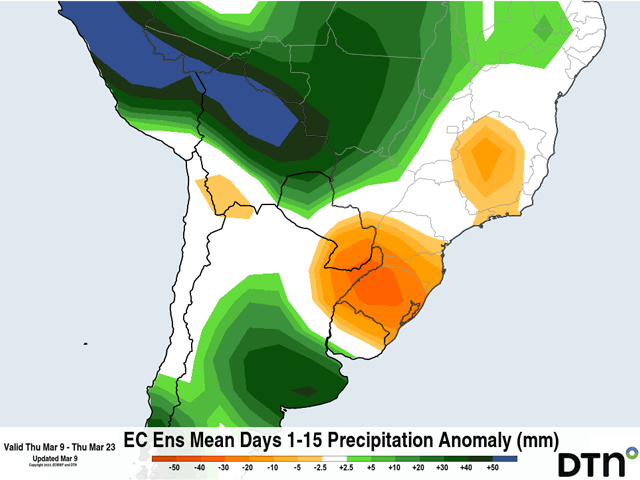
Looking from above can give us an idea about how Brazil's agricultural progress is going at this time of year.

Amidst forecast decreases in production for both corn and soybeans in Argentina from various sources, will there be any hope to improve conditions? Or will production forecasts fall again next month?

After a round of frost over the weekend and continued dry weather, crop conditions in Argentina fell again to historically bad levels.
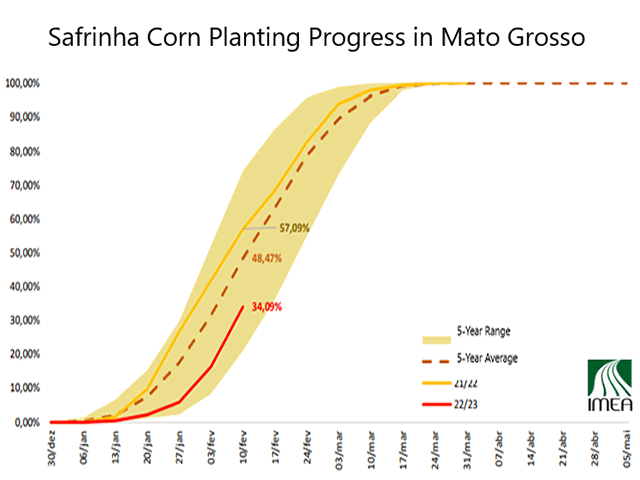
With delays to planting and La Nina still in control, will the safrinha (second-crop) corn in Brazil have production issues?
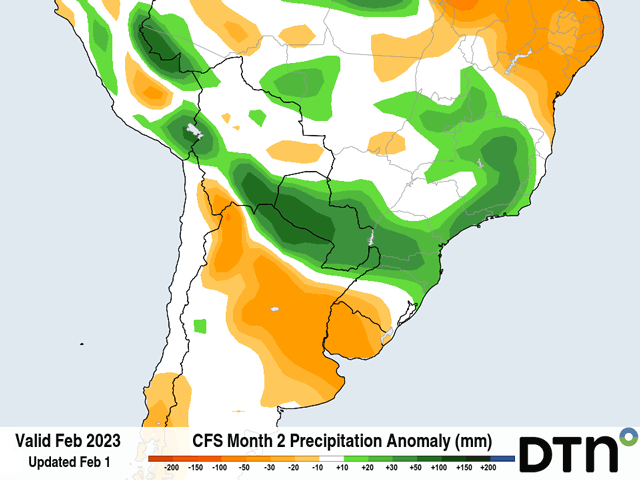
Another round of rain late last week was beneficial for the corn and soybean crop in Argentina. However, the forecast for February is not favorable for continuing the upward trend.

After a burst of good rainfall late last week, corn and soybean conditions improved in Argentina. However, the underlying dryness concerns continue. More rain is falling this week and next. Will the crop continue to have a positive response?

A series of three cold fronts will move through Argentina through Jan. 28. Models are keen on producing widespread precipitation with each front. But will the rain work out as forecast and are crops too far gone to benefit?

Recent production estimates by the USDA, Rosario Grain Exchange, and Buenos Aires Grain Exchange all point to the effect of poor weather conditions in Argentina, the world's third-largest producer of soybeans, and fourth-largest producer of corn.
DIM[2x3] LBL[blogs-south-america-calling-list] SEL[[data-native-ad-target=articleList]] IDX[2] TMPL[news] T[]
DIM[2x3] LBL[blogs-sourth-america-calling-list-2] SEL[[data-native-ad-target=articleList]] IDX[5] TMPL[news] T[]